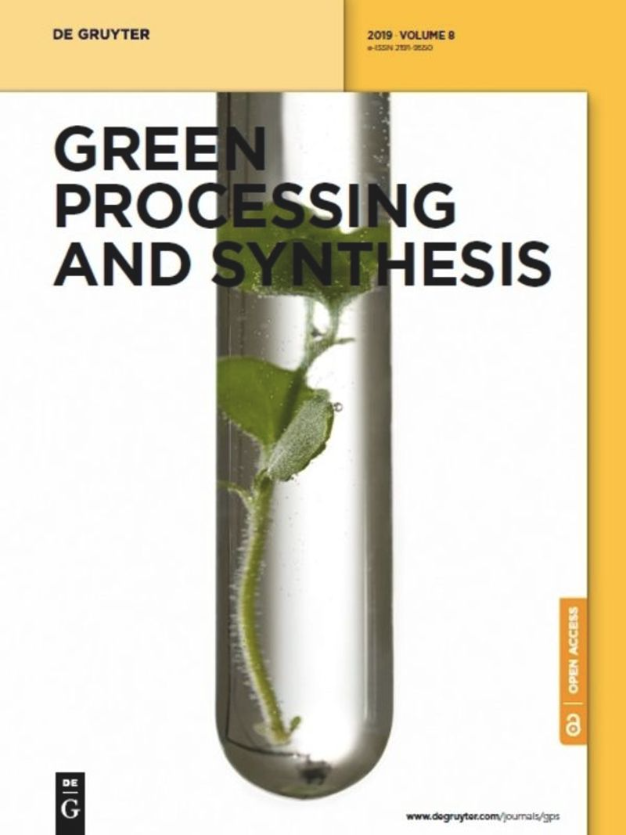Algae-based green AgNPs, AuNPs, and FeNPs as potential nanoremediators
IF 3
4区 工程技术
Q2 CHEMISTRY, MULTIDISCIPLINARY
引用次数: 1
Abstract
Abstract This review addresses green algae-based gold (Au), iron (Fe), and silver (Ag) nanoparticles (NPs) as eco-friendly nanomaterials to deal with biological, organic, and inorganic environmental contaminants. Among nanotechnological tools that can fully degrade, adsorb, and/or convert pollutants into less harmful structures, AgNPs, AuNPs, and FeNPs deserve highlight for their efficiency and low cost. However, green protocols are preferable to produce them in an eco-friendly manner. Although phycosynthesis is still in its infancy, algae present various advantages as green raw materials to NPs’ synthesis; fast growth rate, low-energy input requirement, low costs, easy and eco-friendly cultivation, and high tolerance to metals are examples. To allow their large-scale application, however, challenges regarding obtaining sufficient biomaterial with good reproducibility, designing protocols to achieve desirable features on NPs, and recovering the biocompatible nanomaterial after use still need attention. Perspectives for the field involve surpassing these limitations, broadening knowledge on synthesis mechanisms, protocols, and new species useful to offer, in the future, commercial eco-friendly, and low-cost phycosynthesized AuNPs, AgNPs, and FeNPs to nanoremediation. The potential of these NPs to deal with environmental contaminants, their advantageous characteristics and biocompatibility, the main limitations associated with their large-scale application, and future prospects for the field will receive attention.基于藻类的绿色AgNPs、AuNPs和FeNPs作为潜在的纳米修复剂
摘要本文综述了基于绿藻的金(Au)、铁(Fe)和银(Ag)纳米颗粒(NP)作为环保纳米材料,用于处理生物、有机和无机环境污染物。在可以完全降解、吸附和/或将污染物转化为危害较小的结构的纳米技术工具中,AgNPs、AuNPs和FeNPs因其效率和低成本而值得关注。然而,绿色协议最好是以环保的方式生产。尽管藻类合成仍处于初级阶段,但藻类作为NPs合成的绿色原料具有多种优势;生长速度快、能源投入要求低、成本低、易于环保种植以及对金属的高耐受性就是例子。然而,为了实现其大规模应用,在获得足够的具有良好再现性的生物材料、设计在NP上实现所需特征的方案以及在使用后回收生物相容性纳米材料方面的挑战仍然需要关注。该领域的前景包括超越这些限制,拓宽合成机制、方案和新物种的知识,这些知识有助于在未来为纳米修复提供商业环保、低成本的藻合成AuNPs、AgNPs和FeNPs。这些纳米颗粒处理环境污染物的潜力、其有利的特性和生物相容性、与大规模应用相关的主要局限性以及该领域的未来前景将受到关注。
本文章由计算机程序翻译,如有差异,请以英文原文为准。
求助全文
约1分钟内获得全文
求助全文
来源期刊

Green Processing and Synthesis
CHEMISTRY, MULTIDISCIPLINARY-ENGINEERING, CHEMICAL
CiteScore
6.70
自引率
9.30%
发文量
78
审稿时长
7 weeks
期刊介绍:
Green Processing and Synthesis is a bimonthly, peer-reviewed journal that provides up-to-date research both on fundamental as well as applied aspects of innovative green process development and chemical synthesis, giving an appropriate share to industrial views. The contributions are cutting edge, high-impact, authoritative, and provide both pros and cons of potential technologies. Green Processing and Synthesis provides a platform for scientists and engineers, especially chemists and chemical engineers, but is also open for interdisciplinary research from other areas such as physics, materials science, or catalysis.
 求助内容:
求助内容: 应助结果提醒方式:
应助结果提醒方式:


